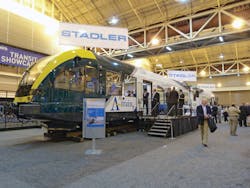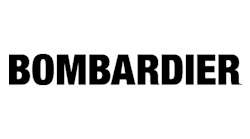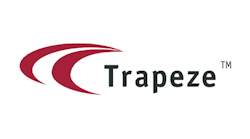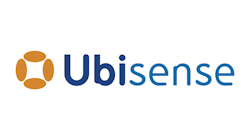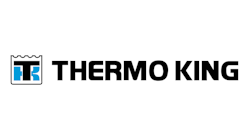Nova Bus' Electro Mobility aims to reduced energy consumption and emissions with its electric bus prototype
Nova Bus revealed several new transit bus technologies and innovative solutions at APTA Expo. The highlight was its new fully electric transit bus prototype.
Electro Mobility is a core focus for Nova Bus, which is making great strides in significantly reducing energy consumption and emissions. Along with continuously improving the efficiency of current systems, the company is exploring leading-edge technologies with North American partners and leveraging synergies from throughout the Volvo Group to provide fuel savings. The Nova Bus team was proud to unveil its promising fully electric prototype bus and Electro Mobility solutions at APTA's Expo.
"We want to be ready. We want to lead the industry to cleaner fuels. That is why the electric bus is here," explained Nova Bus Vice President of Business Development Jean-Pierre Baracat, P.E. "Our objective is to have something commercially viable in the next few years. We really want to industrialize this; it's not going to be a flavour of the day type of project."
Nova Bus plans to have a handful of the electric buses in 2012 to use for field testing. "It will help us work out the bugs of a new technology," Baracat said. "We want to make sure it is controllable."
"We're really making our customers part of our R&D team," added Nadine Bernard, marketing director.
In addition to the electric bus prototype, attendees were also among the first to discover Nova Bus' new transit bus interior. Behind its bright, modern look, the new interior integrates innovative solutions designed to significantly enhance the passenger environment and streamline bus maintenance. This advanced design is the result of extensive research that combines the best of manufacturer and operator field expertise.
"We didn't reinvent the whole thing, but we made sure it's more airy," Baracat said. The new interior feels more like that of rail car interiors and incorporates leaner, more pure lines, he explained.
The new interior also includes a video display that has GPS capability, which can be used to make announcements regarding landmarks or used to leverage advertising opportunities, Baracat said.
The third bus on display was the Nova LFX, Nova Bus' Bus Rapid Transit vehicle, designed to meet high demands for capacity, reliability, speed and comfort. The LFX features a sleek, full roofline, stylish design and numerous amenities for passengers and operators alike, including ITS4mobility, Volvo's intelligent transport solution.
"It's meant to attract passengers," Baracat explained. "It's to change the perception that public transit is for people who can't afford a car. It's for the choice rider."
Apollo Video Technology Showcases Fleet-Wide Vehicle Information Management Software
Apollo Video Technology showcased its Vehicle Information Management (ViM) software for mobile video surveillance systems. Apollo Video's ViM software is a comprehensive application designed to mitigate the risk of video loss, reduce maintenance and operating costs and increase accessibility of video surveillance and fleet data.
Apollo Video recently introduced new features to the ViM software: The DVR Health Module provides automatic fleet-wide health monitoring and diagnostics of on-board video equipment, which, as a result of automated, wireless diagnostic reports, has reduced maintenance and operating costs for many transit agencies. Additionally, a newly released driver behavior-management tool provides reviewers of the video clips with a specific field in which they have the ability to include notes annotating driver actions and behavior designed to increase safety, provide feedback to drivers and help to promote a more positive rider experience.
"In the last several years, transit operations nationwide have converted to high-performance mobile video surveillance systems due to the increased need for public safety and reliable video evidence," said Rodell Notbohm, general manager of Apollo Video Technology. "We are witnessing an important strategic shift in the way the transit industry utilizes technology; in addition to extending current video capabilities, municipalities and transit decision-makers are looking for integrated solutions – like Apollo Video's – to reduce maintenance and operating costs while addressing security needs."
Thermo King Offers Bus Climate Control Solutions
Thermo King, a manufacturer of temperature control systems for a variety of mobile applications and a brand of Ingersoll Rand, introduced three new products. These solutions include the IntelligAIRE III microprocessor with advanced diagnostics and J1939 CANBus communication capability, long-life brushless motors and all-electric HVAC.
The IntelligAIRE III with SAE J1939 Communications Network is an advanced microprocessor-based controller for bus climate control systems which can be programmed for either manual or automatic operation. This third-generation solution helps improve operational efficiency for lower lifecycle costs.
"You can flash load new software very, very easily," said said Doug Lenz, Thermo King director of product management and marketing. "It allows customer to continue to optimize the control for their operation because everybody's application is a little different so they can taylor that for optimal energy efficiency."
The new controller is standard on coach and transit solutions and optional on shuttle bus air conditioning solutions.
The Second Generation Brushless Motors are now available on the Thermo King rear-mount T Series and the roof-mount low floor (RLF) units, reduce the HVAC unit weight by 20 percent to help improve fuel economy and lower operational costs.
"It's a little over a 100-pound weight reduction compared to our other system," said Lenz.
This second-generation, more sustainable solution features a condenser package that requires less energy and a more advanced diagnostic capability. Lenz said, "Should there be an issue with the fan motor, it's much more easy to diagnose that it is the fan motor, and which fan motor." Available for coach and transit buses.
The all-electric HVAC system for buses uses alternating current (AC) enabling users to increase energy and operational efficiency. This solution optimizes air conditioning capacity to provide consistent comfort for passengers and drivers throughout the vehicle at all engine speeds.
The all-electric HVAC system also improves fuel economy by eliminating the negative impact of variable engine RPMs on load and demand. The all-electric HVAC solution also uses energy-efficient R407c refrigerant and offers lower operational and life cycle costs because there are fewer parts to maintain and replace, and there are no valves, hoses or seals to leak refrigerant.
Bombardier Launched New Light Rail Vehicle Platform
Under the theme "Shaping the Future of Mobility," Bombardier Transportation showcased four of its most recent innovations in the field of mobility: the Bombardier Flexity Freedom, a light rail vehicle designed specifically for the North American market; the Bombardier PrimoveCity e-mobility solution; the Bombardier Innovia 300 family of driverless turnkey systems; and the Bombardier ALP-45DP locomotive.
The Bombardier Flexity family encompasses the industry's most complete portfolio of light rail solutions. Bombardier introduced the latest member of the Flexity family — the Bombardier Flexity Freedom vehicle — at Expo. Designed specifically for the North American market, this vehicle combines 100 percent low-floor technology with conventional wheel-set bogies, and features an improved and enlarged carbody concept, better corrosion protection, an improved cab structure, an enhanced air-conditioning system, a unique driver's cab, and the second generation of Bombardier Mitrac highly energy-efficient traction equipment. In addition, it also showcases exchangeable front modules and a flexible interior design with unprecedented possibilities for customization.
Expo attendees were able to board and tour a mock-up of the Flexity Freedom vehicle.
Stadler Showcased its GTW DMU 2/6
New diesel-electric GTW 2/6 commuter rail vehicle features passenger compartment with 75 percent low floor section providing level boarding at all passenger doors.
Stadler, a Swiss rail car builder, showcased the diesel-electric GTW DMU 2/6 low-floor rail car. The car on display was one of 11 that has been ordered by Denton County Transportation Authority (DCTA). The rail cars will be used for the A-train, a passenger rail line being constructed by DCTA.
The vehicles are compliant with the American with Disabilities Act (ADA), and will incorporate enhanced air conditioning, passenger information systems, video surveillance and a significant part of the Federal Railroad Administration (FRA) compliant elements. There are 104 seats and standing room for 96 persons in every vehicle.
"This is the fourth generation, and it really shows the evolution of the product," explained Stadler President Stephen Bonina, P.E. "The design of this car is focused on it being able to complete its mission. The reliability is off the charts."
The traction equipment is housed in a separate power car, efficiently insulating the passenger compartments from noise. In addition, it has a redundant traction power system consisting of two units, each with a diesel engine, asynchronous generator, IGBT power converter and asynchronous drive motor.
To date, 551 GTW cars have been sold in 13 countries, including 37 in the United States, said Peter Jenelten, executive vice president marketing and sales.
Stadler is putting a new focus on its presence in the United States, according to Jenelten. "Up until now we have supplied these trains from Switzerland. We need to be present in the United States with production. We have to establish something in the United States," said Jenelten.
He said a concept and site for U.S. production will be determined by the end of the year.
"It's Swiss quality, meets U.S. standards and will be built in America," Bonina said.
Attendee response to the GTW has been positive, Bonina said. "They can't believe the quality. The quality is the No. 1 statement I'm hearing. Right out of the factory, it works," he said.
Trapeze Keeps IT Real
At Trapeze Group, they were "Keeping it Real," using real-life stories from customers about providing real-time information to passengers. A live social media wall shared stories from attendees as well as customers who were unable to make it to the show.
"Obviously that's our play on words with 'it' and 'IT,'" said Trapeze Group President John Hines.
One of the IT solutions the company featured at Expo is Trapeze Community Connect. "It's almost like Expedia for transit," said Meaghan Wilkinson, director of marketing. "It shows different routes in different counties and allows multiple agencies to come together and pool their resources."
Added Hines: "It's in everyone's interest to share information."
Hines stressed that the solutions Trapeze offers can stand on their own, but a combination of solutions can add great value. In addition, they can be integrated with an agency's existing systems.
Altair Product Design Developing Series Hydraulic Hybrid Bus
BUSolutions a public-private advance transit bus development initiative by Altair Product Design Inc., has produced an innovative solution to the challenges that confront America's local and regional transit systems: the worlds' first series hydraulic hybrid bus, the LCO-140H (Low-Cost of Ownership-1st 40-foot Hybrid).
The primary goal of this program was to design and develop a commercially viable technology-demonstration vehicle that illustrates the commercial benefits of Altair's system-level, simulation-driven design approach to addressing today's challenges in the public transportation industry.
"Our whole premise was not to just showcase the technology, but to develop a low-cost ownership vehicle," said Michael Kidder, vice president corporate marketing.
Design engineers on the BUSolutions team took a clean-sheet approach to design the bus, applying their deep domain knowledge and a simulation-driven design strategy using Altair's HyperWorks computer-aided engineering software suite. The resulting extremely lightweight, heavy-duty bus design yields more than twice the fuel efficiency of conventional buses at a lower lifetime cost. This is a first for any hybrid bus. Requiring no infrastructure upgrades to operate, the LCO-140H is an attractive option for transit authorities to cost-effectively upgrade aging fleets with hybrid vehicle technology.
Ubisense Automates Rail Yard Management with New Real-Time Location System
Ubisense introduced Transit Yard Manager (TYM) for Rails, a real-time location system (RTLS) that automates yard operations and improves efficiencies and productivity. By precisely locating rolling-stock in both indoor and outdoor areas, operators gain an unprecedented level of visibility into workflow which helps to improve all areas of rail yard operations.
TYM is a complete integrated solution that measures the location of rolling-stock using best-in-class sensors and translates that into actionable business intelligence through an intuitive software application. Because rail yards significantly impair the performance of most location systems, TYM is built on Ubisense's ultra-wideband (UWB) RTLS, which is specifically designed to provide accurate, reliable location data in very challenging circumstances.
"Transit Yard Manager for Rails was developed as a direct result of customer demand," said Adrian Jennings, vice president of technology, Ubisense. "Rail operators consulted with us to explain their long-time challenges associated with manual rail yard audits, and asked Ubisense to develop a solution that could help automate operations. We developed Transit Yard Manager for Rails to meet their needs, and it is already being used in operations as diverse as commuter light rail and national heavy freight."
TYM for Rails provides rail operators with several real-time location benefits, including:
- Location of rolling-stock anywhere in the yard, indoors or out
- Reduced number of personnel required for yard auditing
- Real-time visibility of assets to operations and scheduling departments
- Integration of all existing software such as maintenance, dispatching and scheduling into a unified dashboard view
- Precise dwell-time measurements in the maintenance shops and in the yard
- Improved staging to reduce late pull-outs
- Real-time consist assembly
- Real-time view of available tracks
